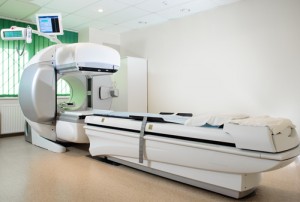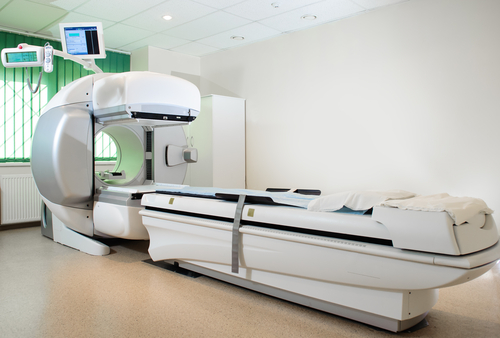 Medscape’s Nick Mulcahy reports (“High-Dose RT Is a ‘Conundrum’ in Localized Prostate Cancer” Medscape. Sep 24, 2014.) that according to a commentator at the American Society for Radiation Oncology (ASTRO) 56th Annual Meeting, September 15, results of a huge clinical trial raises questions about the radiation therapy (RT) dose of most commonly used for treating localized prostate cancer in the United States.
Medscape’s Nick Mulcahy reports (“High-Dose RT Is a ‘Conundrum’ in Localized Prostate Cancer” Medscape. Sep 24, 2014.) that according to a commentator at the American Society for Radiation Oncology (ASTRO) 56th Annual Meeting, September 15, results of a huge clinical trial raises questions about the radiation therapy (RT) dose of most commonly used for treating localized prostate cancer in the United States.
The primary objective of the clinical trial, entitled A Phase III Randomized Study of High Dose 3DCRT/IMRT versus Standard Dose 3DCRT/IMRT in Patients Treated for Localized Prostate Cancer, was to determine whether 3D-CRT/IMRT to 79.2 Gy in 44 fractions will lead to improved overall survival in patients treated for prostate cancer compared to a group of patients treated with 3D-CRT/ IMRT to 70.2 Gy in 39 fractions. Secondary objectives were to a) determine freedom from PSA failure, disease-specific survival, local progression, and distant metastases, b) collect dose/volume data to allow tumor control probability and normal tissue complication probability modeling for patients treated with radiation therapy for prostate cancer, c) determine the incidence of grade 2 or greater GU and GI acute and late toxicity in patients treated with each of the regimens described above, d) prospectively collect quality of life data, including sexual function, to compare outcomes between the two treatment groups, e) prospectively collect diagnostic biopsy samples to determine the influence of histopathologic or tumor-specific cytogenetic or chromosomal markers on cancer control outcomes following radiation, and f) to collect paraffin-embedded tissue blocks, serum, plasma, and buffy coat cells for future translational research analyses.
The study evaluated 1,532 patients at 104 institutions in the U.S. and Canada, making it the largest ever investigation of this type. Of the 1,532 men enrolled in the trial, 1,499 were available for analysis: 748 in the high-dose group and 751 in the standard-dose group.
Based in Philadelphia, RTOG is a key clinical research component of the American College of Radiology (ACR) and serves as a multi-institutional, international clinical cooperative group funded primarily by the National Cancer Institute. The RTOG was initially organized in 1968 under the direction of Dr. Simon Kramer at Thomas Jefferson University as a national clinical cooperative group for the purpose of conducting radiation therapy research and cooperative clinical investigations. RTOG provides an infrastructure for clinical investigators from the United States, Canada, and international sites to seek more effective treatments for cancer, and since its inception has activated 460 protocols, accrued a total of approximately 90,000 patients to cooperative group studies, and published more than 800 papers reporting the results of its findings.
[adrotate group=”1″]
The RTOG is a dynamic multidisciplinary group with vigorous participation by physicians and other researchers from over 300 of the leading academic and community medical facilities in the United States, Canada and internationally, including nearly 90 percent of all NCI-designated comprehensive and clinical cancer centers and many of the major academic and regional centers of Canada.
The RTOG has determined that radiotherapy combined with long-term hormone suppression significantly improves survival for men with high-grade prostate cancer (Gleason score 8-10). However, men with locally advanced prostate cancer (Gleason score 2-6) benefit most from hormonal suppression prior to their radiotherapy.
Nick Mulcahy reports that in the RTOG 0126 study, after 10 years, there was no significant difference in overall survival between men in the high-dose group and men in the standard-dose group (66.7% vs 65.6%; hazard ratio [HR], 0.9 8; P = .87). Moreover, there was an increase in both gastrointestinal (GI) and genitourinary (GU) toxicity with the higher dose, which presents a conundrum. He notes that the results were made public early because the trial had crossed a predetermined futility boundary, acknowledging that a hoped-for 23% reduction in the risk for death (HR, 0.77) would not be reached, according to the study’s lead author and study chair Jeff Michael Michalski, MD, a Professor of Radiation Oncology, Vice Chairman, Radiation Oncology, and Chief, Genitourinary Service at Washington University in St. Louis.
8; P = .87). Moreover, there was an increase in both gastrointestinal (GI) and genitourinary (GU) toxicity with the higher dose, which presents a conundrum. He notes that the results were made public early because the trial had crossed a predetermined futility boundary, acknowledging that a hoped-for 23% reduction in the risk for death (HR, 0.77) would not be reached, according to the study’s lead author and study chair Jeff Michael Michalski, MD, a Professor of Radiation Oncology, Vice Chairman, Radiation Oncology, and Chief, Genitourinary Service at Washington University in St. Louis.
More encouragingly, only 3 percent of all patients died from prostate cancer accounting for 13 percent of all subject deaths during the trial. Most causes of death were other cancers (22 percent) or other causes (46 percent), indicating that persons with non high risk prostate cancer are much more likely to die from other causes. As an old saying goes, “more men die with prostate cancer than from it.”
 Medscape’s Mulcahy cites Danny Song, MD, Co-Director, Prostate Cancer Multidisciplinary Clinic, and Associate Professor of Radiation Oncology and Molecular Radiation Sciences at Johns Hopkins University in Baltimore, who was was not involved with the trial, but acted as a discussant during the meeting’s plenary session, noting that “The conundrum we face now is that high-dose radiation has already become standard of care in this country. I think it is safe to say that high-dose treatment should not be considered mandatory in patients with intermediate-risk prostate cancer, and may be overutilized.”
Medscape’s Mulcahy cites Danny Song, MD, Co-Director, Prostate Cancer Multidisciplinary Clinic, and Associate Professor of Radiation Oncology and Molecular Radiation Sciences at Johns Hopkins University in Baltimore, who was was not involved with the trial, but acted as a discussant during the meeting’s plenary session, noting that “The conundrum we face now is that high-dose radiation has already become standard of care in this country. I think it is safe to say that high-dose treatment should not be considered mandatory in patients with intermediate-risk prostate cancer, and may be overutilized.”
Dr, Song observes that those least likely to benefit from higher-dose RT are patients of advanced age (older than 70 years) and those with favorable-risk disease (1 or 2 intermediate-risk factors), less than 50% of cores positive, a PSA velocity below 2 ng/mL per year, and comorbidities. “Other patients may benefit from dose escalation, but there is no level 1 evidence of survival improvement,” he concludes.
Sources:
RTOG
Medscape
American Society for Radiation Oncology (ASTRO) 56th Annual Meeting
Image Credits
Washington University
Johns Hopkins University


